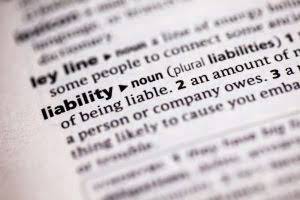
However, doing so would result in an excessive amount of detail in the capital account of the permanent owner. Notice that the Income Summary account is now zero and is readyfor use in the next period. Let’s explore each entry in more detail using Printing Plus’sinformation from Analyzing and Recording Transactions and The Adjustment Process as our example.
- This means you are preparing allsteps in the accounting cycle by hand.
- Dividend account is credited to record the closing entry for dividends.
- Then, you debit the expenses, once again directing the balance to Income Summary, which now reflects your net income.
- The year-end closing is the process of closing the books for the year.
- However, when inventory and other assets are involved, it is essential to apply the latest inventory cost methods, such as FIFO or LIFO, waiting on the broader harmonization under IFRS reviews.
- According to best practices outlined on learning platforms including Investopedia, the balance is moved to Retained Earnings, reducing the account by the total dividends paid.
- Sellers must conduct a thorough assessment of their inventory to determine its current value.
Step 4: Close Dividends to Retained Earnings
Let’s move on to learn about how to record closing those temporary accounts. closing enteries Any account listed on the balance sheet is a permanent account, barring paid dividends. On the balance sheet, $75 of cash held today is still valued at $75 next year, even if it is not spent. To close expenses, we simply credit the expense accounts and debit Income Summary. To close that, we debit Service Revenue for the full amount and credit Income Summary for the same.

Order to Cash Solution
This isn’t just about keeping up with the times – it’s about transforming the entire close process from a complex chore into a straightforward task. By integrating a journal entry management module, as found in the Highradius suite, organizations can automate the creation and management of journal entries, drastically increasing efficiency. Permanent Account entries show the long-standing financial position of cash flow a company.
- Now that all the temporary accounts are closed, the income summary account should have a balance equal to the net income shown on Paul’s income statement.
- Imagine you own a bakery business, and you’re starting a new financial year on March 1st.
- This is done by debiting each revenue account and crediting the income summary account.
- After the closing entry is made, Bill’s balance sheet would list $8,000 of assets, $3,000 of liabilities, and $5,000 of equity.
- In case of a company, retained earnings account, and in case of a firm or a sole proprietorship, owner’s capital account receives the balances of temporary accounts.
- Something noteworthy here is that the above closing entry can be passed even without using the income summary account.
Transfer Net Income or Loss
Once all expense accounts are closed, the income summary account will present the net income or loss for the period. If the company earned more revenue than expenses, the income summary will have a credit balance. This balance will be carried forward in the next step to close the revenue accounts. Closing entries are journal entries made at the end of accounting periods that involve transferring data from temporary accounting on the temporary accounts on the income statement to permanent accounts. It is permanent because it is not closed at the end of each accounting period.
- Now, the income summary account has a zero balance, whereas net income for the year ended appears as an increase (or credit) of $14,750.
- The accounting cycle requires journalizing and posting closing entries.
- A temporary account accumulates balances for a single accounting period, whereas a permanent account stores balances over multiple periods.
- If you put the revenues and expenses directlyinto retained earnings, you will not see that check figure.
- At the end of the accounting year 2018, the expense account needs to be credited to clear its balances, and the Income summary account should be debited.
- In this blog, we will discuss how to do closing entries in accounting, what is closing entries in accounting with examples, the 4 closing entries in accounting, and the purpose of closing entries in accounting.
- The use of closing entries resets the temporary accounts to begin accumulating new transactions in the next period.
Step 2: Transfer Expenses

Each of these closing journal entries in accounting ensures that the temporary accounts are reset and do not interfere with the next period’s transactions. QuickBooks Accountant Next, transfer all expense account balances to the income summary account. The total expenses are calculated and transferred to the income summary account. This zeros out the expense accounts and combines their effect with the revenues in the income summary by crediting the corresponding expenses.

- It’s a delicate balance that corporations must manage – supporting growth and rewarding investment, all shown transparently thanks to closing entries.
- Because this is a positive number, you will debit your income summary account and credit your retained earnings account.
- The closing entries are dated in the journal as of the last day of the accounting period.
- This process resets the temporary accounts to zero and prepares the books for the next period.
- The income summary is a temporary account used to make closing entries.
Accounts can be closed on a monthly, quarterly, semi-annual or annual basis. Most companies close on a monthly or annual basis but that isn’t to say it is uncommon to see a quarterly or semi-annual close. When it comes to auditing and compliance, accurate closing entries aren’t just important, they’re the linchpin of financial integrity.